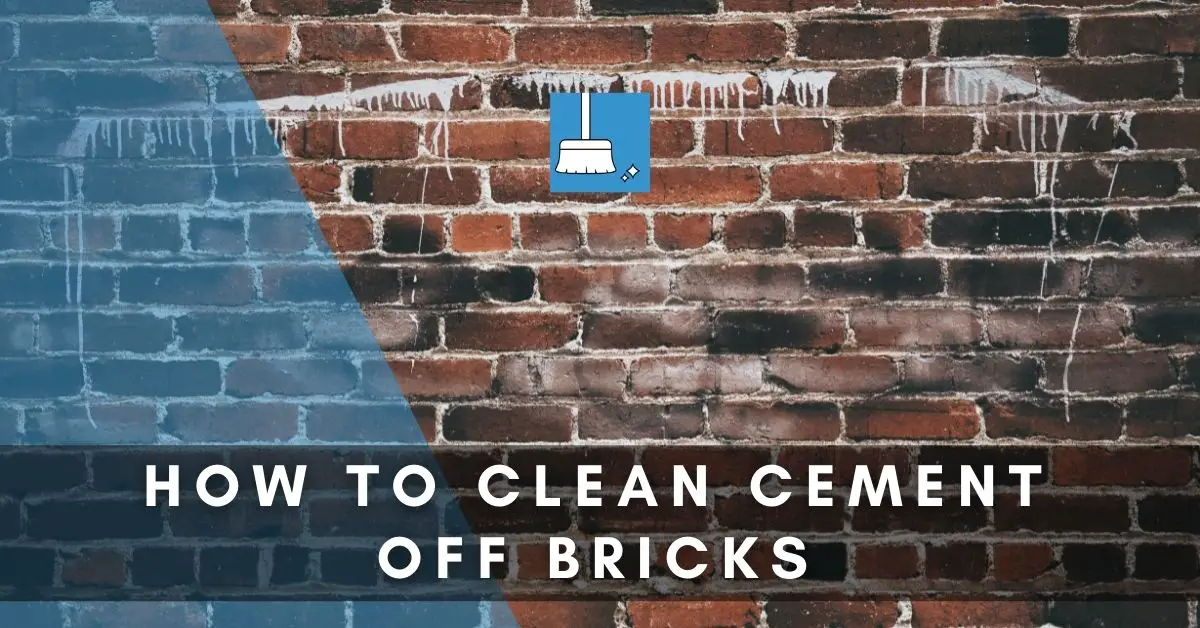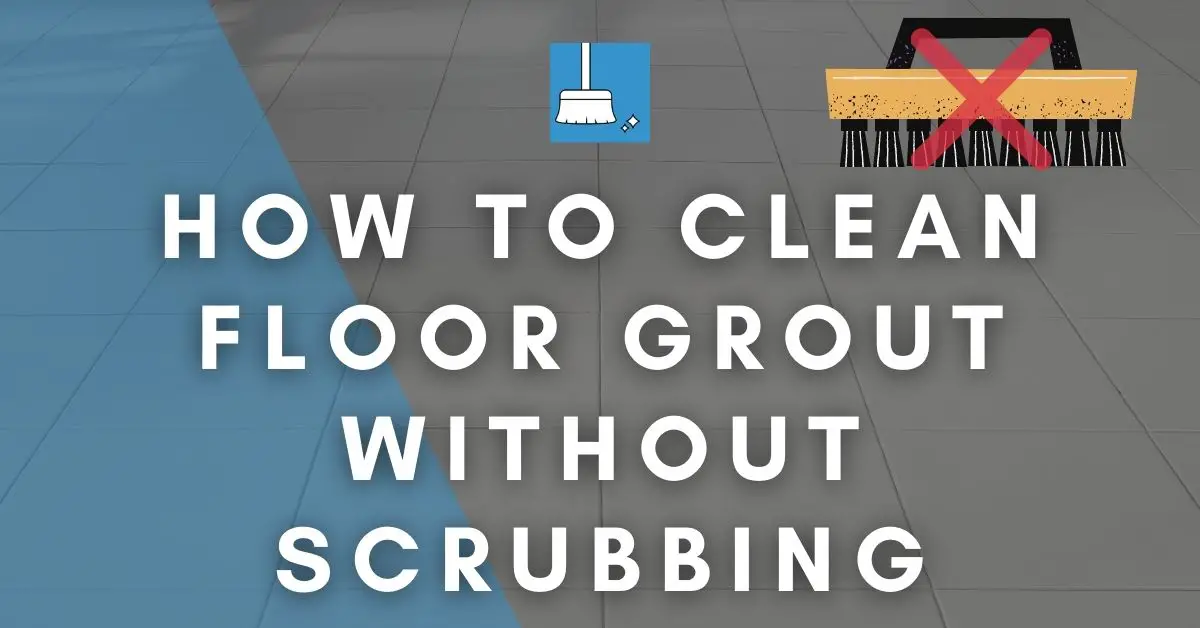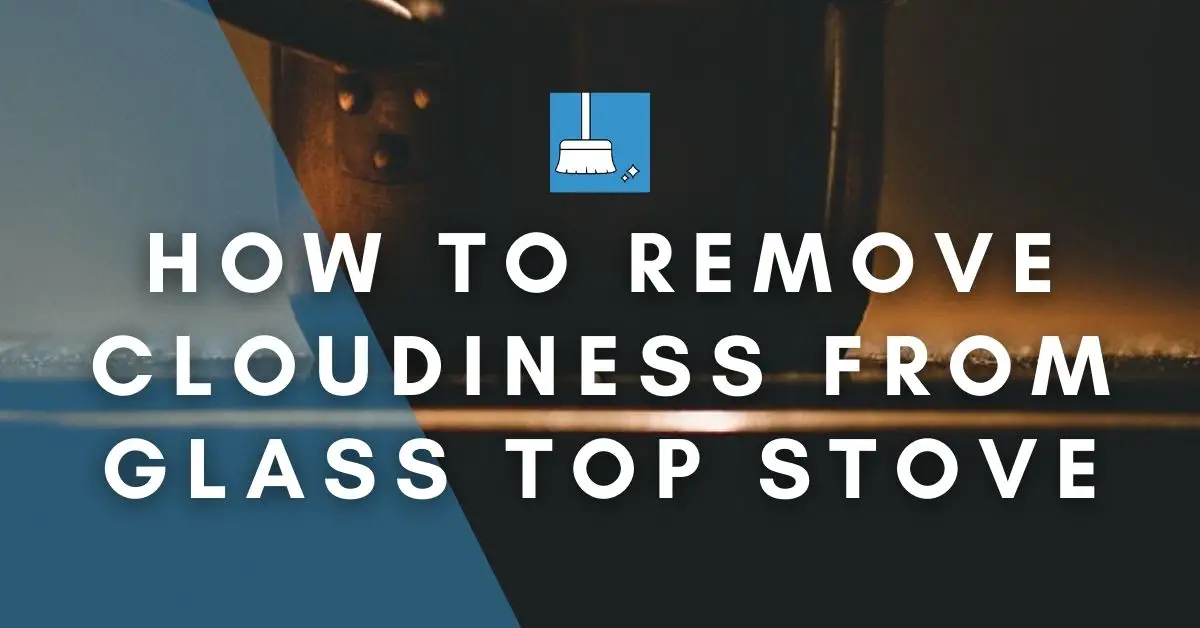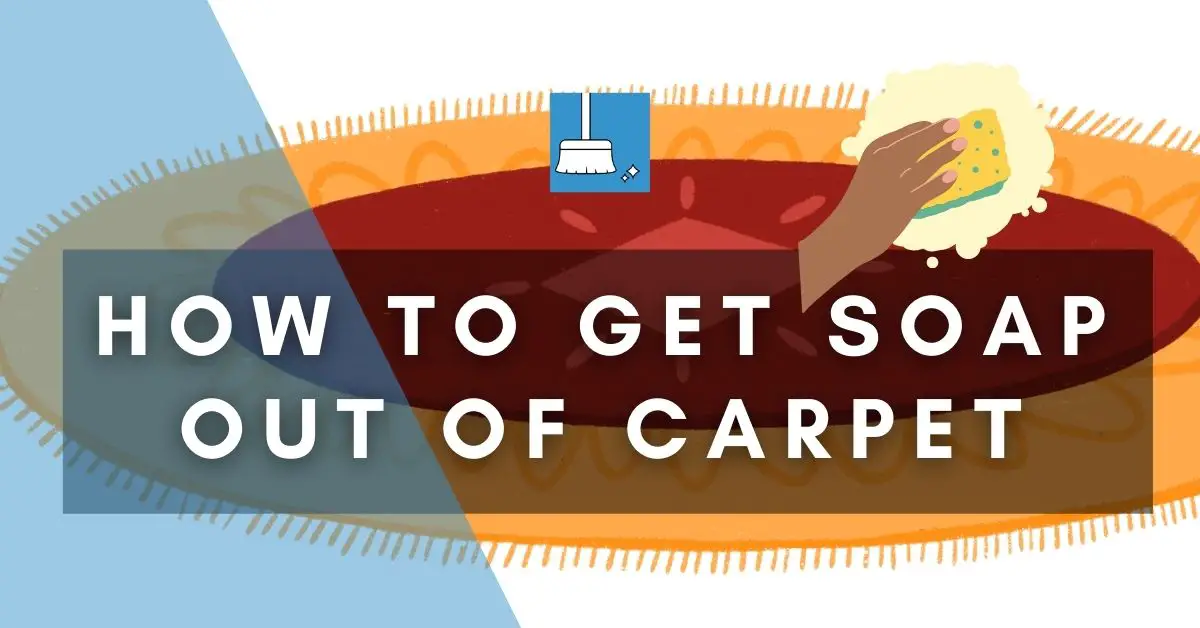Cement splatters and stains on bricked walls, sidings, or painted surfaces are not uncommon sights. A sloppy contractor or your clumsy DIY project could be the cause of such splatters.
In any case, cleaning cement/mortar from Bricks and structures made of bricks is not rocket science.
In this article, we give you detailed steps on how to get rid of the cement (Whether dried, wet or in the form of dust) from those bricks.
How to Clean Cement off Bricks
Removing dried cement from brick is no easy task. You can easily damage the brick. However, give the cement at least a week to dry before you attempt removing it. If the cement is still very fresh, you should use Method 3 in this article.
Method 1: For Cleaning Individual Bricks
YOU’LL NEED
1- Safety glasses, gloves
2- Running Water
3- Garden hose
4- Chisel & Hammer
5- Scrub brush/Wood scraper
6- Muriatic acid
7- Plastic Tub/Bucket (Optional)
8- Ammonia (Household)
Note: In some countries, Muriatic Acid is known as spirits of salt’, ‘mortar remover’, or ‘brick cleaner’. Just check the label as it is essentially Hydrochloric acid.
STEPS
STEP 1: Wear your safety gear and make a solution of 1 cup Muriatic Acid and a gallon of water.
WARNING: Always pour Muriatic acid into water and not the other way round as that can cause the solution to jump out of the bucket.
STEP 2: First, wash the bricks with running water, preferably using a garden hose or submerging the bricks in a tub full of water (if the bricks are not too many). This will make it easy for the cement to come off.
Note: Muriatic acid or Hydrochloric acid is strong in nature so it m must be mixed diluted with water to reduce its strength so it does not damage the bricks. Even the diluted solution must be used carefully to prevent damage to materials and yourself.
STEP 3: Once the bricks are thoroughly wet, start removing the cement using a chisel and a hammer so that the cement starts to chip away.
STEP 4: Use the solution of Muriatic acid and water on the bricks and let it sit for 4-5 minutes or until the bubbles form. This will make the excess mortar on the bricks, softer and easier to scrub.
STEP 5: Using a stiff brush, remove the dissolved cement from the brick. You may need to apply the solution several times until you have a clear brick.
STEP 6: Finally, wash the bricks with running water (again using the hose) to remove the acidic solution from them and apply a solution of Household Ammonia and water (1:10 Ratio) to the bricks to neutralize the acid.
Method 2: For Cleaning Brick Walls & Other Brick Structures
Cement or mortar that has spilled onto the walls or other building structures during the construction activities is not easy to remove when wet.
Smeared mortar that has been smeared over the brick façade can be dissolved with acid because it is an alkaline material.
This method is also useful in removing concrete/cement film that appears on bricked walls.
YOU’LL NEED
1- Safety glasses & gloves that are chemical resistant (Usually PVC coated)
2- Running Water
3- Garden hose
4- Scrub brush/Wood scraper
5- Muriatic acid
6- Plastic Tub/Bucket
7- Ammonia (Household)
STEPS
STEP 1: If the spill is fresh, let the cement dry for a week because the acid will eat into soft cement/mortar. If it has dried, proceed to the next step.
STEP 2: Muriatic acid can be used on most kind of bricks, including paving bricks, to remove cement splatters. Wear your safety gear and prepare a solution of Muriatic Acid and water in the ratio of 1/10 in the tub or bucket.
STEP 3: Wash the wall or other brick structure with running water using a garden hose.
STEP 4: Apply the acidic solution over the brick wall/ structure with the scrub brush (from top to bottom) and let it stay for 4-5 minutes until you see bubbles forming. The cement/mortar will start to soften.
STEP 5: Using the scrub brush, remove the dried cement from the brick wall/structure and start to scrub it. You may have to apply the solution again if cement still remains on the brick structure. Repeat this step until all the cement comes off.
Be careful not to apply too much acid between the bricks as it can eat away the mortar holding the bricks together.
Note: Do not apply/spill the acidic solution over the thing that are made of other materials such as metals, plastic, painted structures, plants, window sills, furniture, etc. You should cover these with a tarp or plastic. These things may be in close vicinity of the brick wall. In case you accidentally spill the solution over such a structure, use a mixture of Ammonia and water (Equal amounts) to neutralize the acid.
STEP 6: When you see the cement/mortar come off, start to rinse the brick wall with your garden hose.
STEP 7: Apply a solution of Household Ammonia and water (1:10 Ratio) to the brick wall/structure so that the leftover acid doesn’t cause damage by drying. This step will neutralize the acid.
Method 3: For Cleaning Fresh Cement / Mortar off the Bricks
Although, cement takes 24 to 48 hours to dry enough so that you can walk over it, cleaning the fresh splatter is highly advisable because thorough cleaning becomes more difficult when you go past the drying time.
YOU’LL NEED
1- Safety glasses
2- Hot Water
3- Soap
4- Wire brush
5- Chisel
6- Bucket (Optional)
7- Metal Putty knife (Optional)
STEPS
STEP 1: Wash the bricks with water or submerge the brick into a bucket full of water.
STEP 2: Gently tap the excess cement on the bricks using your chisel so that it comes off.
STEP 3: Apply a solution of hot water and soap.
STEP 4: Use a wire brush to clean away the remaining cement/mortar from the brick by scrubbing in a back and forth motion.
Alternately, you can use a metal putty knife to pull the lubricated mortar away from the brick.
Warning: Be careful not to break the brick while tapping with the chisel or scrubbing with a wire brush.
Method 4: Clean Cement Dust off Bricks
Construction activities and your DIY projects that involve drilling into walls made of cement and bricks can lead to cement dust being spread all over the place including the brick walls.
Note: Cement and brick dust tends to stick to the surfaces if left for too long.
This cement/mortar dust can be cleaned easily using the following procedures.
YOU’LL NEED
1- Duster/soft brush
2- Vacuum cleaner
3- Hydrogen peroxide (12 ounces)
4- Water (1 gallon)
5- Spray bottle
6- Clean rag (2)
7- Bucket
STEPS
STEP 1: Dust away the brick wall/structure using a duster or a soft brush. The cement dust on the wall will fall on the floor.
Alternately, you can use a vacuum (with a brush attached to the hose). Vacuum (top to bottom of the brick wall) with small brush strokes.
STEP 2: Prepare a solution of Hydrogen peroxide and water (12 ounces: 1 Gallon) and pour it into a spray bottle.
STEP 3: Spray this solution on a rag to wipe up the cement dust on the floor. Keep rinsing the rag often as you wipe up the cement dust.
STEP 4: Finally, clean off the floor with a damp clean rag.
Tips for DIY Cement/Concrete Projects
1- When working with cement or mortar, use plastic sheets on the nearby areas and floor in order to avoid cement spilling onto those areas and the base of your wall (to prevent cement drippings).
2- Try to prevent cement splatters when working on your DIY projects.
3- You should throw away the brush and bucket that have come in contact with Muriatic acid after use.
Also, get rid of the remaining acid solution by pouring it into a bucket full of baking soda solution ( 1 Gallon of water mixed with 2-3 cups of baking soda). Do this in the open as it produces a chemical reaction resulting in toxic fumes. When the bubbling/fizzing stops, dispose of this solution.
4- When working with Muriatic Acid, keep some Baking soda handy. This will be used for the accidental acid spill over your skin. First, wash the skin with water and then apply baking soda over it.
5- Avoid using too much acid on the walls. If you notice the brick wall changing its color, stop immediately.
6- If the cement stains/splatter on the brick is mild, then you can use Grout cleaners instead of Muriatic Acid as they contain Phosphoric acid which is gentle when compared to Muriatic acid.
7- When drilling your walls, use a drill duster so that the concrete/cement dust doesn’t get spread into the air or on surrounding areas.
8- Make sure you remove cement from your hands before it dries otherwise it will damage the skin.
Conclusion
Removing Cement from the bricks can be a bit challenging if the cement has cured.
If the cement/mortar is still very fresh, meaning only a few hours have elapsed since the splatter first happened, you may use Method 3.
If the cement/mortar has had the time to cure (4-7 days), then you should use Method 1 (For Bricks) or Method 2 (for brick structures).
Here is a guide if you are also interested in knowing about getting cement off your tools.





